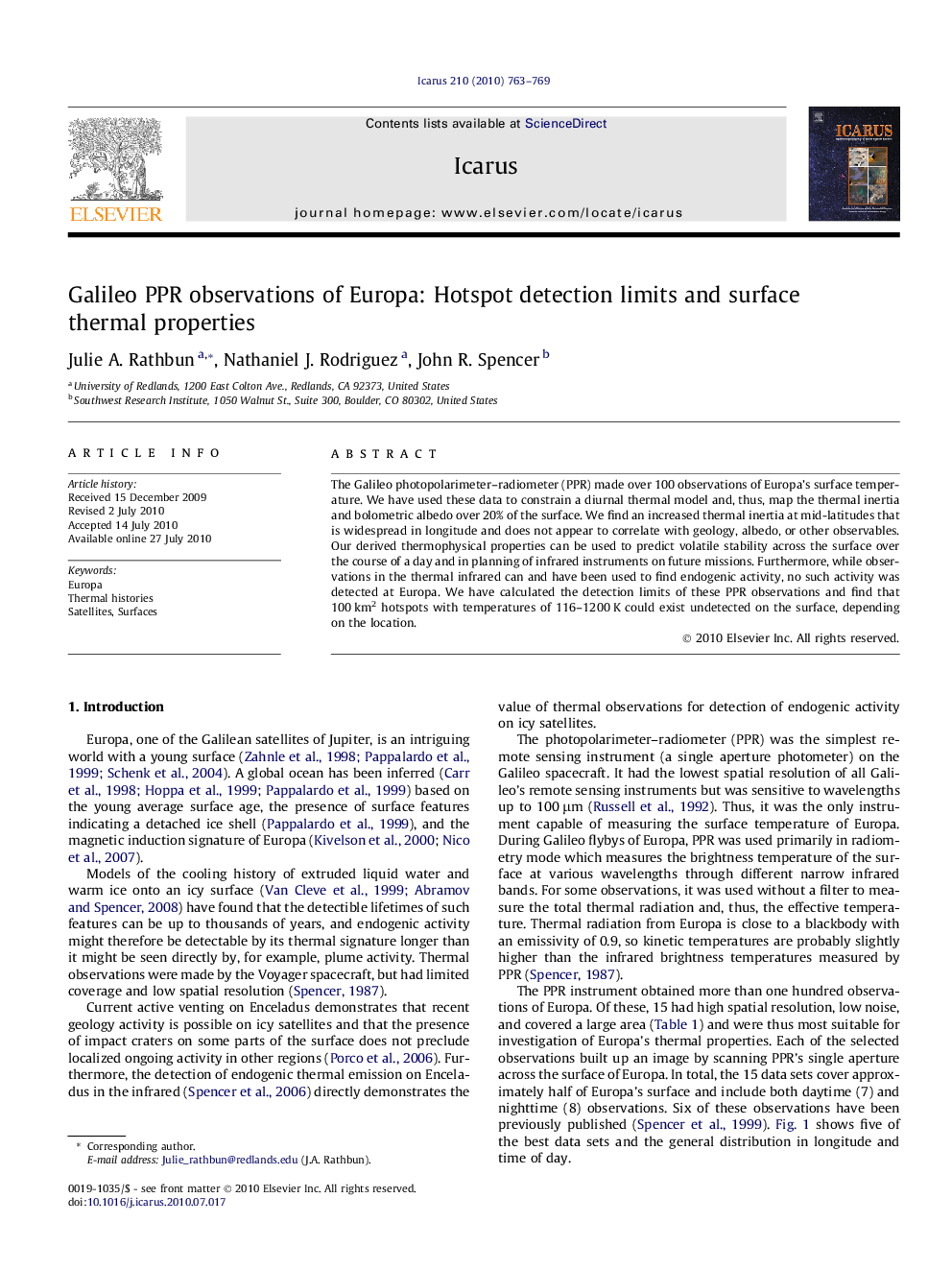| Article ID | Journal | Published Year | Pages | File Type |
|---|---|---|---|---|
| 1773624 | Icarus | 2010 | 7 Pages |
The Galileo photopolarimeter–radiometer (PPR) made over 100 observations of Europa’s surface temperature. We have used these data to constrain a diurnal thermal model and, thus, map the thermal inertia and bolometric albedo over 20% of the surface. We find an increased thermal inertia at mid-latitudes that is widespread in longitude and does not appear to correlate with geology, albedo, or other observables. Our derived thermophysical properties can be used to predict volatile stability across the surface over the course of a day and in planning of infrared instruments on future missions. Furthermore, while observations in the thermal infrared can and have been used to find endogenic activity, no such activity was detected at Europa. We have calculated the detection limits of these PPR observations and find that 100 km2 hotspots with temperatures of 116–1200 K could exist undetected on the surface, depending on the location.
